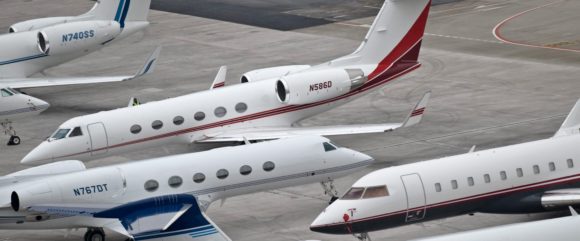The rising number of fleet retirements are starting to bite – airlines need much fewer aircraft and with that, far fewer crews. Airlines are in a race to shed aircraft and people as fast as they can. The damage from this action will trickle down into communities more quickly than anyone is ready for. The damage is also likely to occur faster than any pickup from an air travel recovery. There has been a focus on pilots, but less on flight attendants.
Today IAMAW District 141 President and Directing General Chair Mike Klemm published a note titled “The Time to Prepare is Now”. In it, they note: “Regrettably, United Airlines and District 141 have disagreed vehemently on how to handle the steep decline in demand for air travel due to the coronavirus pandemic. On May 1, 2020 United Airlines announced an involuntary furlough of approximately 14,000 full-time fleet service and customer service employees, which would have caused a pay and benefit cut, and also multiple violations of our contracts.” They also point out “To be perfectly clear, if demand for air travel does not rebound before September 30, 2020 there likely will be furloughs at every single US-based airline.” Then Mr. Klemm offers some serious advice “I sincerely ask that you prepare for a potential furlough in October. Please hold off on buying any new big-ticket items, such as a car or house. I hope you will take every step you can to help save money for yourself and your family. It is very rare to have five to six months to prepare for a furlough, so I hope everyone will use this time to take the necessary precautionary steps.“
We live in a time of great fear for people involved with commercial aviation. That fear is well-grounded with the industry cratering. Just as some are seeing green shoots in air travel recovery, the industry as a whole remains substantially outsized for the tiny demand. Green shoots notwithstanding, abrupt adjustments are being reformulated daily and they are in a downward trajectory – and getting steeper every day.
To attempt to understand how the coming cuts might work out, we took a look at fleets as a guide. This is a guessing game and we don’t know if and how summer travel demand will evolve.
The largest airline fleet is in single-aisle aircraft and we have a few charts to share that will help to understand what an impact may look like. The chart shows the active fleet worldwide.
Up until quite recently we are used to thinking of passenger aircraft as assets with an economic life that fades after 20 years. Focusing on the US airline industry, using the same chart format as above we see the following.
We now see fleet retirements closer to 15 years. Delta is retiring relatively young aircraft. American is close behind. United has not made any public retirement decisions about its current fleet. United is facing the same decisions.
Based on the data we believe that potentially global airlines could remove 854 single-aisle aircraft from service. For the US we estimate that up to 590 single-aisle aircraft over 15 years old may not come back into service. The downstream impact on people working for airlines is shocking.
In the US the ratio of pilots per aircraft is about 15:1, the 590 fleet cuts suggest airlines laying off close to 9,000 single-aisle pilots. The big three US airlines average about 24,000 flight attendants at each airline with an average ratio of F/A per aircraft at 26:1. This suggests at least over 15,000 layoffs among flight attendants working on single-aisle aircraft.
The flight crew is not the only group impacted by the great fleet shrink. If we focus more broadly on “front line workers”, essentially all those in uniform, the big three US airlines average 66 frontline workers per aircraft. The 590 aircraft retirements could mean close to 39,000 skilled people losing their jobs.
This only considers the single-aisle fleet. Twin-aisle aircraft require more crew and that drives up the gross number. Twin-aisles are being parked more aggressively, with some Delta’s 777s only a decade old. Could the US airline industry’s great fleet shrink lead to 50,000 people losing their jobs? Another point to consider – if we see summer travel recover, at what level might this recovery be? Nobody is even thinking about 50% of last year. And, once the damage is done, how long will it take for the industry to recover? Mr. Klemm’s note resonates.
Views: 0





